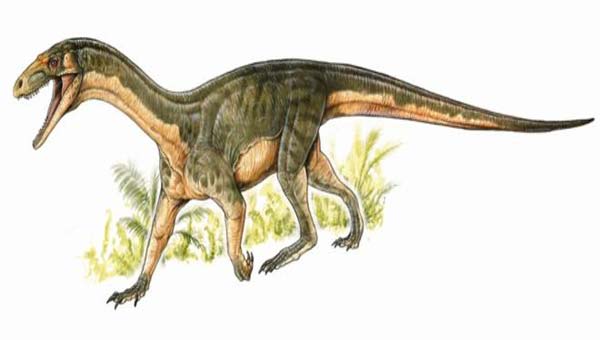

New fossils found in 2015 help fill gaps in our knowledge of how Teleocrater looked. Photo taken from BBC
London, UK (BBN) - One of the earliest relatives of dinosaurs had some features we associate today with crocodiles and alligators, a study suggests.
Many palaeontologists have wondered what the earliest dinosaur relatives looked like, as the fossil record in this time period is sparse, reports BBC.
Some assumed they walked on two legs, looking a bit like miniature dinosaurs.
But the newly described creature walked on four legs like a croc, the journal Nature reports.
The 2-3m (7-10ft) carnivorous animal, unearthed in southern Tanzania, lived some 245 million years ago during the Triassic Period. It pre-dated the earliest dinosaurs.
Prof Paul Barrett, from London's Natural History Museum, one of the authors on the new paper, said: "This is a little animal that we call Teleocrater. It's not very big...it probably would have weighed about the same as the average family dog."
He told BBC Radio 5 Live: "Visually, it would have looked a bit like a souped-up version of a komodo dragon, crossed maybe with something else. So it would have been a slender animal, not a big armoured thing like a crocodile."
Teleocrater rhadinus appeared just after a large group of animals known as archosaurs split into one branch that led to dinosaurs (and, eventually, birds) and another branch that led to today's alligators and crocodiles.
Its anatomy combines features present in the last common ancestor of these groups, such as a crocodilian-like ankle joint, with some features considered characteristic of dinosaurs.
The first fossils belonging to Teleocrater were discovered in 1933 in Tanzania. They were studied at London's Natural History Museum in the 1950s. But these specimens were missing crucial bones, such as the ankle.
Therefore, scientists at the time could not tell whether they were more closely related to crocs or to dinosaurs.
The new specimens were uncovered in the East African country in 2015, resolving some of those outstanding questions. They show that it is one of the earliest members of the archosaur family tree and that it walked like a crocodylian.
Sterling Nesbitt, one of the new study's authors from Virginia Tech in Blacksburg, US, said: "The discovery of Teleocrater fundamentally changes our ideas about the earliest history of dinosaur relatives."
But he added: "It also raises far more questions than it answers."
Teleocrater, along with other dinosaur relatives, lived across a wide range of different regions, from Russia to India to Brazil.
The team's next steps are to return to southern Tanzania to look for more remains and missing pieces of the Teleocrater skeleton.
BBN/SK/AD